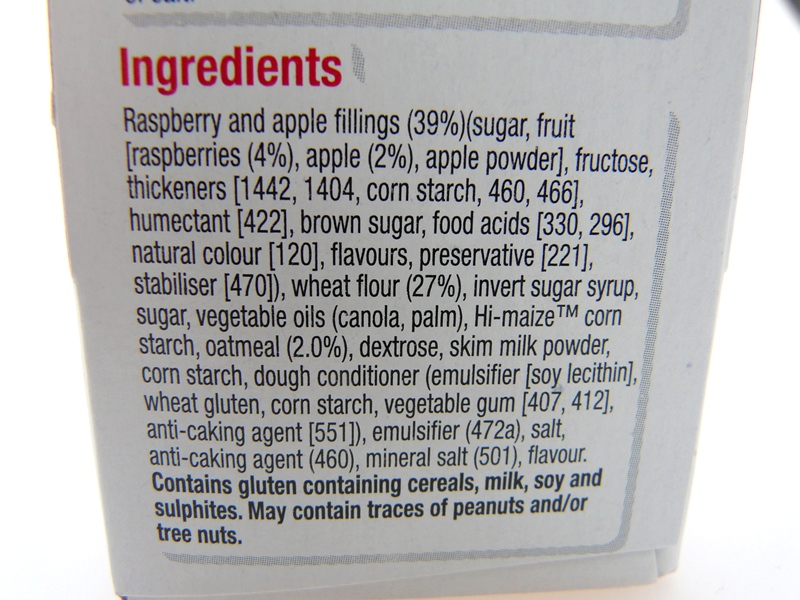- Home
- Blog
- Additives and Labels
- Additives and what they do
Additives and what they do
Written by Catherine Saxelby
on Tuesday, 24 August 2010.
Tagged: additives, allergies, food colours, food labels, food safety, FSANZ, guides, measures, monosodium glutamate, technology

All additives have to be identified by their general functional name and also by a code number OR their individual chemical name. So citric acid may appear as either FOOD ACID (CITRIC ACID) or FOOD ACID (330) - in the latter case, you need an additive code list to find out which food acid it is.
The numbers used in Australia correspond to an international system used to identify additives. You'll see European foods with additives listed with an "E" number.
Why identifying additives matters
Identifying additives is important for people who suffer from reactions to food components which can be either a food allergy or a food intolerance. Additives, unfortunately, are not the only substances to avoid - many sufferers are sensitive to both synthetic and naturally-occurring substances.
For example, a person sensitive to the preservative potassium benzoate (212) would also have to avoid the natural benzoates found in fruit, vegetables, tea, herbs, spices and peppermint.
Similarly if MSG or mono-sodium glutamate (621) causes problems, it has to be avoided along with the natural glutamates of cheese, mushrooms and tomatoes which are responsible for so much of the flavour of Italian cooking.
In addition, many people are trying to avoid all uncecessary additives and eat clean and focus on more whole foods.
Can you guess what foods these Ingredient Lists come from?
 The above Ingredient List (in orange) is from Heinz Lite Salad Cream 250 g bottle.
The above Ingredient List (in orange) is from Heinz Lite Salad Cream 250 g bottle.
Here's how I interpret the additives in their salad cream:
- The oil needs an antioxidant 319 which is tert-butylhydroquinone to stop it going rancid.Think fat that smells 'off'. Not good. It MUST be added to stabilise the oil in a shelf-stable product.
- There's a thickener from maize 1422 which is acetylated distarch adipate and a stabiliser 412 (guar gum), both of which are required to create a smooth mouthfeel typical of many lower-fat products. When you cut back on fat, you still need something else to thicken and do the job.
- It needs a food acid for that pleasant tang. Here it's 270 which is lactic acid which is found in yoghurt naturally.
- Not sure why it needs two colours 171 (titanium dioxide) and 101 (turmeric as in the curry spice) but they must make it look like a nice creamy-looking salad dressing.

The above Ingredient List is from Kellogg's K-time Twists in Raspberry and Apple flavour which is sold in a pack of 6 bars with total weight of 222 g.
Lots of additives are needed in a shelf-stable non-refrigerated snack bar. Here's my take on them:
- These bars need 5 thickeners including 1442, 1404, corn starch (no number), 460 and 466.
- It has a humectant 422 glycerin to keep the bar soft and moist. Used in cake icings at home.
- There are two food acids 330 citric acid (found in lemons) and 296 malic acid (found in apples).
- The colour is 120 which is a red colour cochineal generally defined as natural.
- It needs a preservative 221 sodium sulphite which is needed to prerserve the fruit ingredients.
- You'll spot a stabiliser 470 salts of fatty acids.
And wait there's more.
- There's two vegetable gums 407 (carrageenan) and 412 (guar gum) which do the job of binding and holding the jelly-like filling together. These are natural gelling agents and nothing sinister about them.
- Plus two anti-caking agents 551 (silicon dioxide) and 460 (cellulose) to stop the bars sticking to their individual wrappers.
- Emulsifier 472a is acetic and fatty acid esters of glycerol, a harmless fat-based binder for the dough.
- Mineral salt 501 (potassium carbonate) is a common food carbonate and keeps flour mixed and separate.
Whew!
Save
Save
Foodwatch
The Good Stuff
The Boring Stuff
© 2025 Foodwatch Australia. All rights reserved
Website by Joomstore eCommerce





